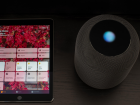Using netTunes, Airport Express and AirTunes. Isn't this what the Digital Hub was supposedly to be all about?
It was just about a year ago when I completed converting my more than 1,200 CDs into AAC/MP3 format where they now reside on a 2000 vintage G4 Cube. The Mac Cube is my Music Server. And since relegating this great piece of Apple technology for music, I've had big plans for music in my office and home.
Originally, I had planned to use the cube as a headless (no monitor/display attached) server connected to my primary stereo/home theatre system in my home. With the ability to share iTunes music libraries over computers on the same network, I had planned to simply connect speakers in my office (which resides in a small guest house in my back yard) and I would have access to my 15,000 songs using iTunes library sharing.
But this solution presented a couple unique challenges. First, my Cube isn't equipped with a Airport (WiFi/802.11) card. Not that this would be an insurmountable challenge, it was another expense. Secondly, space is a problem. The great thing about the Cube is that it doesn't have a fan and therefore is extremely quiet. It is also very small and given that I'd opt out of connecting a monitor to the Cube it would not require too much real estate among my other audio and video components. However, the power supply for the Cube is about 1/3 the size of the cube itself. Again these obstacles are not deal breakers, but they do increase the challenge and functionality of my planned solution. Finally, I do like to create and burn mix/collection CDs of music for my friends. And in 2000 CD burners were not standard equipment on Macintosh computers. So I've got an external CD burner that is connected via firewire to the cube. And even with the great library sharing capability of iTunes, it is not easily possible to burn CDs using shared music. So the CD burner would need to find a home in my audio/home theatre arsenal of equipment. Whew.
Perhaps my biggest headache involves accessing the “headless server” to operate iTunes, create playlists , burn CDs and simply to search and find the music I want to hear for the mood of the moment.
Of course, I had that figured out, too. I'd simply use either Timbuktu or Apple Remote Desktop. Both of these applications would allow me to use my PowerBook or other computer on the home network to connect to the Cube and control all operations of that computer. In other words, these programs would allow me to remotely administer and operate the Cube. Since I already own Timbuktu there would be no additionally cost. However, this technology while excellent does come with a bit of overhead and therefore operating a remote computer this way reduces performance and can create a sluggish and frustrating experience. But hey. It would work.
The result? I'd have a music juke box with 15,000 songs at my whim. Plus I could access this music in my office in the building next to my house. Wow!
But due to the issues and challenges mentioned I haven't moved on my ultimate plan since pulling it together a year ago.
Now comes the good part.
When Apple introduced the Airport Express about a month ago I immediately rushed to the Apple online store and ordered one. And I'll likely purchase one or two more. Why? Because With the introduction of this amazing technology I no longer need to move the Cube, the Cube's power supply and the CD burner to my audio/video component arsenal in the great room of my home. With the deck of cards sized Airport Express, I could simply connect a TOS-link optical cable from the Airport Express to my A/V Receiver and send the music from iTunes running on my Cube. And keep in mind, the Cube is still sitting in its very comfortable resting place among my home recording equipment in my office and studio in the guest house in my back yard. Which means that I still have access to another computer in my office which is great for clients and guests who visit and need to check email, burn CDs or do simply non-processor intensive tasks.
Even with all this exciting Airport Express technology and functionality, I'm still not out of the woods. The challenge of controlling iTunes and choosing songs to play in my house has not been alleviated. Whenever I want to change a playlist, choose a different song or field a request at a dinner party for new music I'd have to step outside my house, into my office/studio operate iTunes on the Cube and then come back into my home.
So you're thinking: “What's a little walk, Allan? Exercise is good!”
Sure. But remember I could solve this problem using the remote control capabilities of Timbuktu or Apple Remote Desktop. But again, these programs are overkill for simply running iTunes. Plus, the performance hit as a result of the overhead would create that frustrating experience. Not fun for just choosing or creating a new playlist.
But I was prepared to deal with this compromise just so I could access 15,000 songs and play them on my home stereo.
Then I found Dave Nanian, Shirt Pocket Software and netTunes — undoubtedly the coolest and best new program for the Macintosh I've see this year. Sure, a bold statement but check it out.
 netTunes is a client/server application that allows you to access and control iTunes running a remote computer on the same network. In other words, I can use my PowerBook anywhere in my house, office/studio, back yard, bedroom, bathroom, kitchen or neighbors pool to launch iTunes and create playlists, change the volume or simply search and play any of my 15,000 songs. Even better, netTunes simply launches the iTunes application Window on the client machine. That means it looks, feels and operates just as if you were running the iTunes program on your computer. But the songs and playlists are on a remote machine. And with Airport Express and its AirTunes technology I can use netTunes to send that music to any Airport Express equipped stereo or speakers on my home network.
netTunes is a client/server application that allows you to access and control iTunes running a remote computer on the same network. In other words, I can use my PowerBook anywhere in my house, office/studio, back yard, bedroom, bathroom, kitchen or neighbors pool to launch iTunes and create playlists, change the volume or simply search and play any of my 15,000 songs. Even better, netTunes simply launches the iTunes application Window on the client machine. That means it looks, feels and operates just as if you were running the iTunes program on your computer. But the songs and playlists are on a remote machine. And with Airport Express and its AirTunes technology I can use netTunes to send that music to any Airport Express equipped stereo or speakers on my home network.
For me the options are endless. I also have outdoor speakers so I can play music in my back yard. I like to work on my patio wirelessly with my PowerBook. So I can control music while relaxing in the summer sun. Or for those summer outdoor parties and bbq's, I can easily choose and play music to fit those summer moods. All using netTunes on my laptop.
Plus, netTunes places “transport” controls for iTunes in the menu bar on OS X. This means I can pause, choose the previous or next song without having the iTunes window open and active. For me, and anyone wishing to run an MP3 or music server netTunes is a must have. And at only $19.95 it's an incredible value. Dave offers a trial version that will let you run netTunes at full functionality for 30 minutes before it shuts down.
So you're thinking what are the cons here. With so much raving about netTunes, AirTunes and Airport Express there has to be a down side, right? Not really. While I haven't used Airport Express, I'm very curious to hear it — audio quality and any degradation that might occur broadcasting high quality audio across 802.11(x). As for netTunes? Installation is easy and it runs great. I had a little difficulty licensing the server, but this proved to be user error. The cool thing about netTunes licensing is Dave (netTunes developer) has decided to require licensing only for the server. This means any client computer can have netTunes installed for free. These clients can control any licensed netTunes server. The only odd thing about netTunes is that the iTunes window from the remote/server computer is resizable non-proportionally. So you can get some stretched and distorted views of your iTunes windows. However, Dave indicated he may include a shift-lock for those who wish to retain the original iTunes window proportion.
So a year in planning and I'm almost there. Now if Apple would just ship my Airport Express. Then the fun really starts to begin. Hey, when it does. Come on over for a wine tasting — and a full demo of all of this wacky stuff! I'm loving it.



